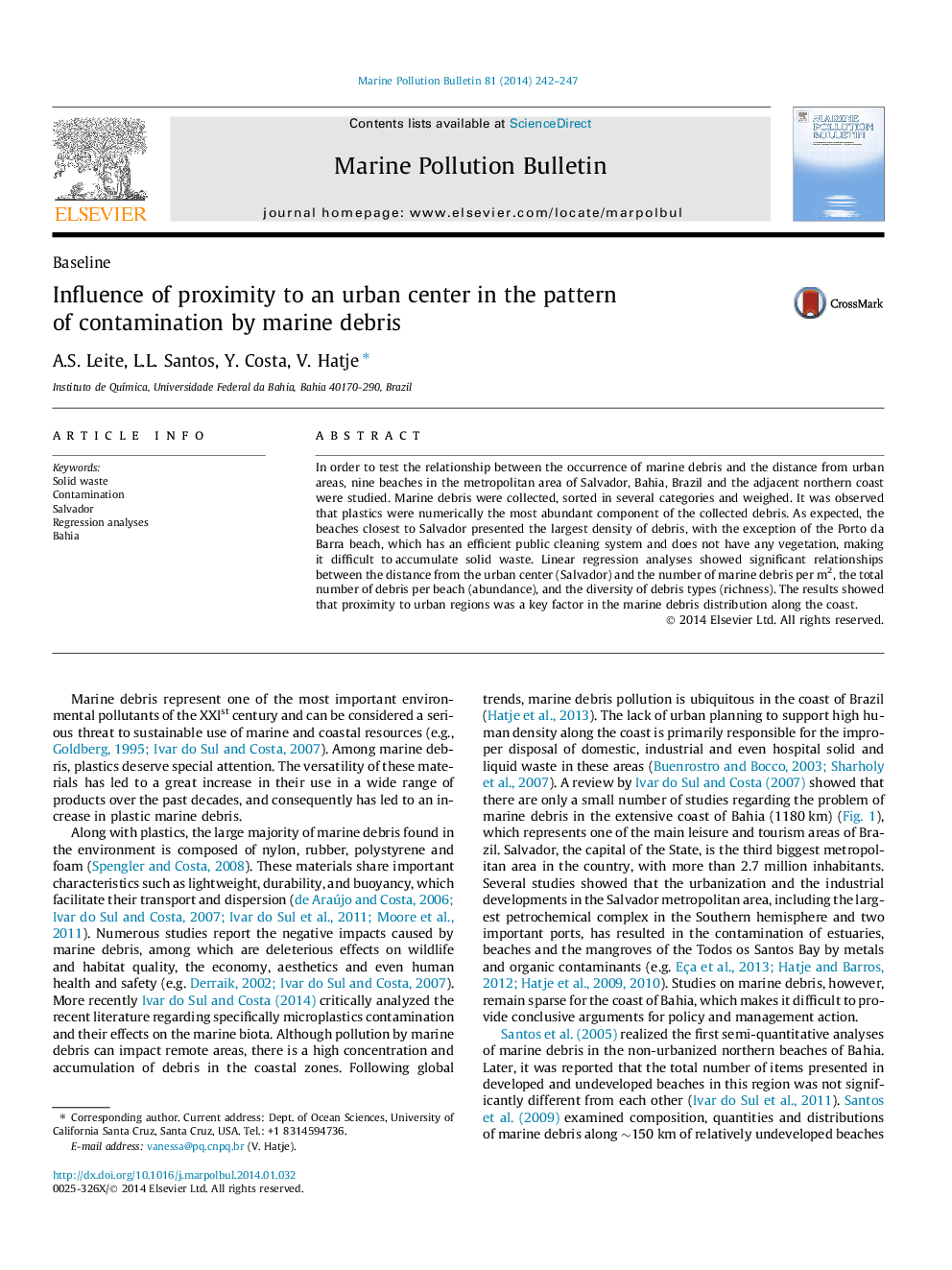| Article ID | Journal | Published Year | Pages | File Type |
|---|---|---|---|---|
| 6358646 | Marine Pollution Bulletin | 2014 | 6 Pages |
â¢Proximity to urban regions was a key factor in the marine debris distributions.â¢There is a predominance of plastics among marine debris in Salvador beaches.â¢Public cleaning services are efficient in keeping low levels of contamination.â¢The problem of beach debris should be addressed at a regional level.â¢Adequate sample design and statistical tests will be always necessary in order to evaluate marine debris.
In order to test the relationship between the occurrence of marine debris and the distance from urban areas, nine beaches in the metropolitan area of Salvador, Bahia, Brazil and the adjacent northern coast were studied. Marine debris were collected, sorted in several categories and weighed. It was observed that plastics were numerically the most abundant component of the collected debris. As expected, the beaches closest to Salvador presented the largest density of debris, with the exception of the Porto da Barra beach, which has an efficient public cleaning system and does not have any vegetation, making it difficult to accumulate solid waste. Linear regression analyses showed significant relationships between the distance from the urban center (Salvador) and the number of marine debris per m2, the total number of debris per beach (abundance), and the diversity of debris types (richness). The results showed that proximity to urban regions was a key factor in the marine debris distribution along the coast.
